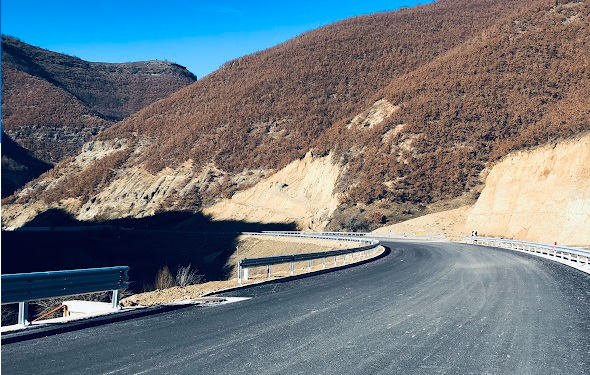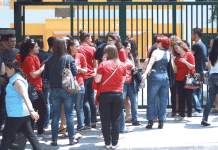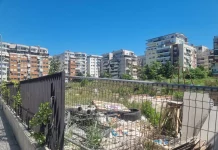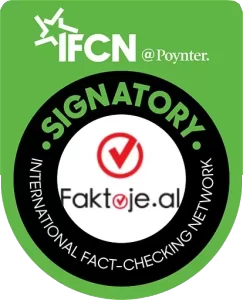The project for the 43-kilometer road from Qukës to Qafë Plloçë, starting in Librazhd area and connecting to Qafë Thana, has missed four completion deadlines so far. The list of consequences begins with a doubling of the cost in the state budget, from $150 million to $400 million, which was initially planned. In the most optimistic scenario, the road will be completed by 2029, when the cost is expected to quadruple. Let’ talk about the verification of the 4 broken promises for the road initiated in 2011 and the engineers’ arguments explaining why it is inefficient. Discover how taxpayers are funding the road lacking even the basic elements of a highway, and the unheard voices of the local farmers affected by this project.
Dorina Azo
The Odyssey of the Qukës-Qafë Plloçë Project
Designed in 2009, the Qukës-Qafë Plloçë road has gone through an odyssey of broken electoral promises from both sides of the political spectrum.
The first one was Sali Berisha, who was Prime Minister at the time, promising to build the road on the eve of the 2009 parliamentary elections. The declaration faced opposition from infrastructure engineers, who argued:
Firstly, the feasibility study was lacking, without which the project could not proceed.
Secondly, a considerable portion of the road, 3-4 kilometers, is at 1,300 meters above sea level, which would make this section impassable during snowfalls.
Thirdly, the lack of project efficiency, an essential condition that, according to experts, is determined by standards.
Qukës-Qafë Plloçë road shortens the distance to Korça by only 2.5 kilometers, which is almost negligible considering the construction costs. Moreover, in terms of time, this route would be even longer than the existing road. Despite opposition from professionals, the ‘Berisha’ government did not hesitate to cut the electoral ribbon and start the work in 2011, propagating that with this project, it was fulfilling the commitment to help end the ‘isolation’ of the mountain villages of Mokra.
This propaganda is refuted by engineers as absurd, explained by the lack of a comprehensive feasibility study. When it comes to connecting and ending the ‘isolation’ of these villages, it was not necessary to build a road of such parameters and staggering costs, which have now doubled, with each day of delay only increasing the expenses borne by taxpayers.
On-site verification
By the end of January 2024, we tried to travel the ‘new’ road that starts at the entrance of Qukës village in Librazhd, where an old board stands as a relic indicating the start of the works in 2015 and the initial value of the project.

The old construction borad for Qukës-Qafë Plloçë road

Signage for the construction works along Qukës-Qafë Plloçë road
Along the road, we saw sporadically paved segments, parts of the first two sections, but not connected continuously to the full package of this project. The final section, partly open, is entirely not constructed.
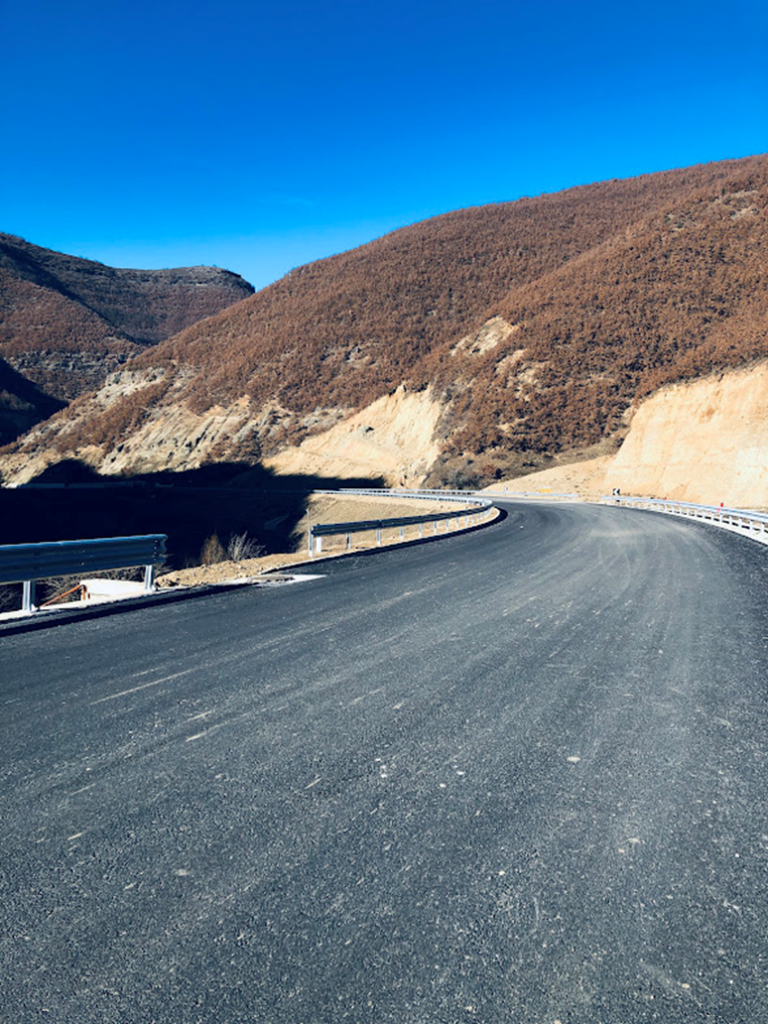
Qukës-Qafë Plloçë, asphalted section
The paved segment extends from Trebinjë village in Upper Mokra to the exit of Kalivaç village, specifically to the tunnel built below the area known as the ‘Greek graves.’ Above this tunnel continues the old road (without any safety standards), leading you towards Pogradec city, and it is not connected to the new artery as planned in the project.

Qukës-Qafë Plloçë, a section that is not asphalted near Pogradec
There we meet 65-year-old Josif Sillo, born and raised in Potgozhan village, in Upper Mokra. Josif and other farmers in the surrounding villages have their lives intertwined with livestock farming, and their main concern is how to guide their animals across the road that only allows livestock to cross in the presence of traffic.
‘Near our village, there is no underpass; we are forced to take the livestock through Kalivaç village to use the underpass there. Animals are currently crossing the road because there is no traffic, but when the flow of cars starts, it will happen to us as it did to those in Labinot,’ – says Josif.

Josif Silo, resident of Potgozhan village
So disinterested are the authorities in listening to the complaints of the residents, who have dedicated their lives to livestock farming, as Josif expresses:
‘We are not asking to be put in a difficult position to build a new underpass for our village, but at least to arrange the land in front of the dried-up river (completed as a wide concrete channel for the passage of water), for the passage of livestock during the dry season.
This would be the best and most cost-effective solution!’ After leaving the 65-year-old in the area known as the ‘cherries zone’, we continued our journey to reach the exit tunnel that connects to the third segment of this road. So far, only the route track has been opened, while the road that will be traversed by the exit tunnels (which will serve for the return from Qafë Plloça to Qukës) has been asphalted only for a few meters. Furthermore, the tunnel ahead does not allow any exit. Looking closely at the third section of the roadworks, they appear almost incomplete, indicating that completion is still far off.
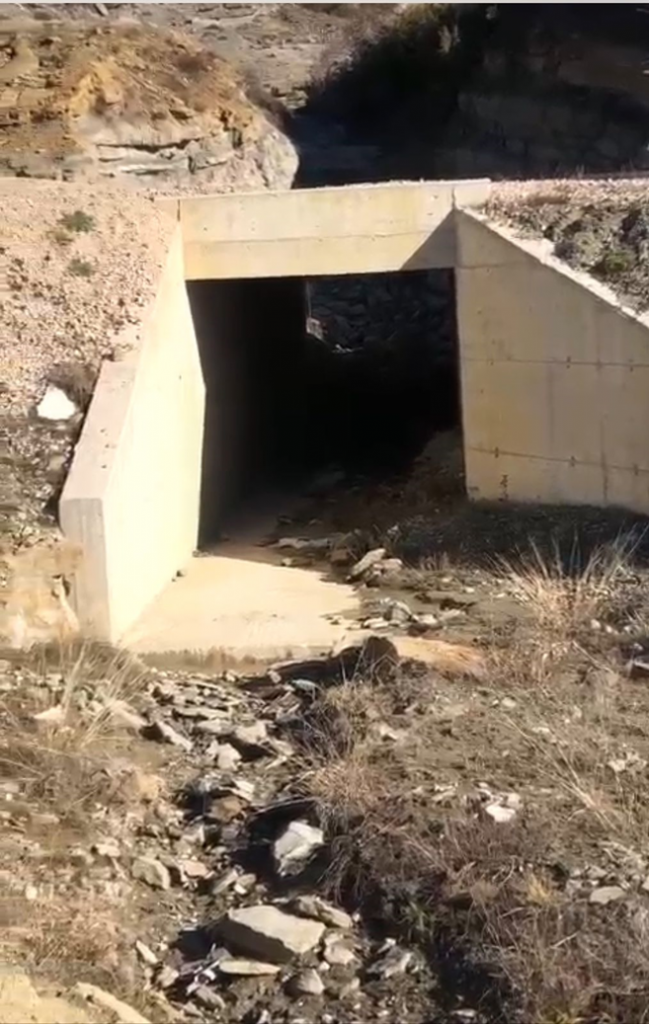
The head of ARRSH, Evis Berberi, declared last September that 37% of the works for Lot III had been completed and that they were expected to be finished by July 31, 2025.
An engineer, familiar with the progress of the works, speaking on condition of anonymity, told Faktoje that it would take at least 4-5 years to complete this lot: ‘Only the route track has been opened, as the removal of debris accounts for up to 30% of the volume of the works. So, nothing has been done for the third lot that enables the exit to Qafë Plloçë. The works of this lot are not expected to be completed by 2025; at this rate, it will take another 4 to 5 years. For the other two lots, where 76% of the works are stated to be completed, the segments are discontinuous between them.
Old ‘project’, new ‘bills’
In 2013, when the socialists came to power, the road works continued following the project of the previous government, with only the subcontracting companies changing and the bills increasing.
On January 26, 2018, Minister of Infrastructure Damian Gjiknuri back then, while inspecting the works, hastened to declare that Qukës-Qafë Plloçë road would be completed one year later:
‘It has been one of the projects inherited with numerous issues, but it is now on the path to resolution. With additional funding, we are confident that this road will be completed within a year. The deadline has elapsed, and the road remains unfinished.
According to the MIE’s Monitoring Report for 2021, in the section ‘Expenditures for the financing of existing policies for ongoing projects for foreign financing,’ it was expected that the works for the first and second sections of the road would be completed by 2021.
According to this data, by December 31, 2020, the works had been completed to the extent of 68%. The project is divided into 3 lots with a total cost of 18.2 billion ALL, financed by foreign sources and the Albanian Road Authority (ARA). According to data in the MIE Monitoring Report, from 2015 until December 31, 2020, 12.2 billion ALL had been spent on the construction of the 3 lots of the project, out of the total contract value.
According to published data, the contract for Lot I of the Qukës-Qafë Plloçë road, which began in 2015, was valued at 5.4 billion ALL. However, by the end of 2020, 4.1 billion ALL had been spent, which is 76% of the total fund. The monitoring report anticipated that the works would be completed by 2021.
For Lot II, the value of the works according to the contract, which was scheduled to be implemented since 2015, amounted to 8 billion ALL. By the end of 2020, 5.7 billion ALL had been spent, equivalent to 71% of the progress of the works.
For Lot III, the contract worth 4.6 billion ALL began implementation in 2016. By December 31, 2020, 2.3 billion ALL had been spent, which is equivalent to 51% of the value. The works for this segment were scheduled to be completed by 2019.
Despite the violation of all these deadlines, Qukës-Qafë Plloçë road is still far from completion.
In the parliamentary interpellation on September 22, 2021, Minister of Infrastructure and Energy Belinda Balluku stated that the planned completion deadlines for Lots I and II, as indicated in the monitoring report, would be delayed by more than a year, with an additional cost of 106 million dollars (USD). ‘The project change has also resulted in financial implications, with additional costs for each lot, and an extension of the completion deadline for these works until April 2021. Although the final disbursement deadline for the first 2 lots was set for April 30, 2021, ARA has requested an extension of the works deadline until December 31, 2022,’ Minister Balluku stated during the interpellation regarding this road.
The ‘gold’ cost of Qukës-Qafë Plloçë road project
The completion deadlines for the road have been delayed at least 4 times, with additional budgetary approvals made at least twice, resulting in the doubling of the project’s initial cost. By the end of December 2022, the financial cost for the construction of the first two sections was estimated at 168 million USD, as confirmed by project managers at ARA. Overall, the financial expenses for the road construction, including the additional loan of 49 million USD from the Saudi Fund for Development, have reached 217 million USD.
‘So far, about 73% of the project works have been completed. The road sections completed so far, with two asphalt layers, are from Km 2.9 to Km 10.5 and from Km 21.8 to Km 33.5. The aforementioned sections are accessible. However, these segments are still in the process of completion, including all road safety elements. The project is expected to be completed by December 2024‘, emphasized ARA in a previous official response to Monitor.al.
Engineers foresee a significant increase in costs until the project is completed. ‘By the end of 2022, the cost of the road amounted 273 million USD. This project was initially planned to be completed with a cost of 150 million USD. Thus, by the end of 2022, the cost has almost doubled. The cost is expected to reach 400 million USD by its completion. So, it’s almost quadrupled from the initial projection,’ stated one of the well-known infrastructure engineers anonymously to Faktoje.
The road project in numbers and figures
Qukës-Qafë Plloçë project will have a length of around 43.3 km, divided into 3 lots.
Lots I and II (km 2.9–km 33.8) are financed by the Islamic Development Bank, Lot III (km 33.8 – km 40.5) by the Saudi Fund for Development, and Lot 0 (km 0.0 – km 2.9) by the Albanian Government.
The Albanian Parliament ratified the loan agreement for a credit worth 49 million USD on December 19, 2022, to begin the works on Lot III, considered the ‘Achilles’ heel’ of the route. Prior to the approval in the plenary session of the agreement, Deputy Minister of Infrastructure and Energy, Ms. Enkeleda Muçaj, stated that the final deadline for the completion of the road works was within the year 2024.
In the initial 10 kilometers, the road runs alongside the Shkumbin River before traversing the rugged terrain of Mokra, an area that needs numerous retaining and supporting walls, over 20 bridges and viaducts, as well as a 375-meter-long tunnel.
The road will be 12 meters wide, consisting of two lanes, each 3.75 meters wide, two paved sidewalks, each 1.5 meters wide, and two unpaved sidewalks, each 1 meter wide. The Qukës – Qafë Plloçë project has been widely announced to be included in the Pan-European Corridor VIII. Yet, for engineers, the road is deemed entirely unsuitable to support the extension of the Corridor VIII project connecting to the highway from Kapshtica, as it does not meet the standards of a highway. For engineers, Qukës-Qafë Plloçë road is only considered a national route, with an unknown completion date, impassable during the winter due to snowdrifts, and a barrier for the livestock and farming community, who are unable to transport animals on a road with vehicle traffic.
Conclusion
Considering the information gathered and the on-site verification, we deem the government’s promise to complete the road by the end of July 2025 as unattainable and merely utilized for electoral propaganda. The delay in construction and the significant rise in costs, as experts argue, remain among the main challenges for the feasibility of this project. The project’s delay is regarded as ‘swallowing’ for state budget funds.

